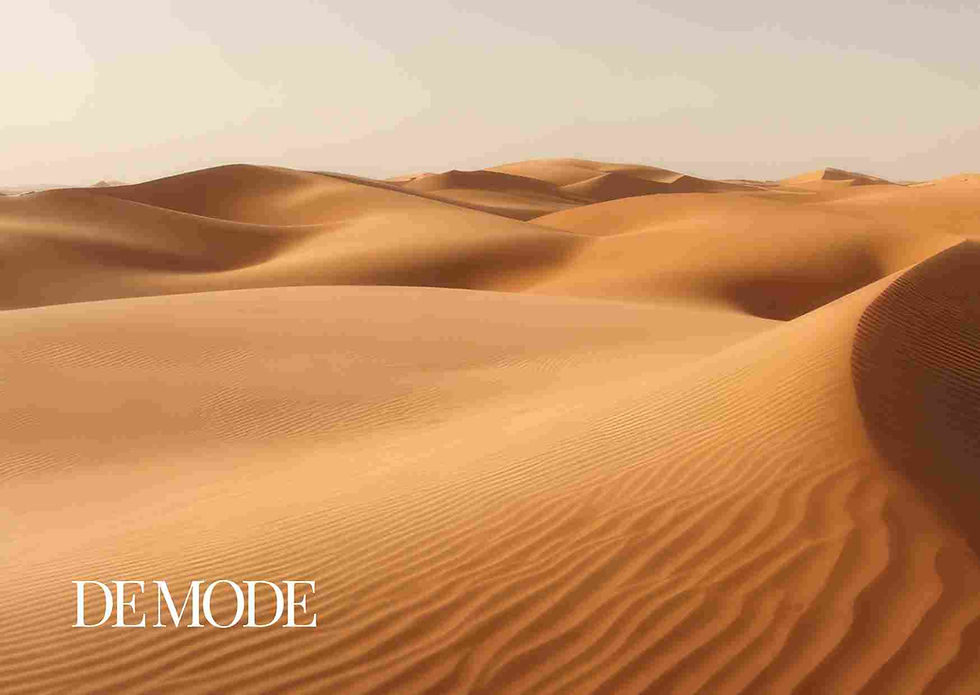EXPLORING THE MARKETS OF THE MIDDLE EAST
- DE MODE

- Jul 29
- 2 min read
ORIGINALLY PUBLISHED IN DE MODE
Article Published on: 29TH JULY 2025 | www.demodemagazine.com
The markets of the Middle East, known as souks or bazaars, offer a sensory-rich experience that blends history, culture, and commerce. These vibrant hubs are not just places to shop but windows into the region’s traditions, craftsmanship, and hospitality. Exploring them is like stepping into a world where ancient trade routes and modern commerce meet.
In Dubai, the Gold Souk is a must-visit, showcasing dazzling jewelry and intricate designs that reflect the city’s reputation as a luxury hub. Nearby, the Spice Souk envelops visitors in the aromas of saffron, cardamom, and frankincense, while traders enthusiastically share stories behind their products.

Marrakech’s Jemaa el-Fnaa square and its adjoining souks in Morocco create a labyrinth of colorful stalls selling handcrafted leather goods, rugs, ceramics, and lanterns. Street performers, snake charmers, and musicians add to the lively atmosphere, turning shopping into an immersive cultural experience.
Istanbul’s Grand Bazaar, one of the oldest covered markets in the world, offers everything from Turkish carpets and mosaic lamps to spices and traditional sweets. Its maze-like alleys, filled with the sound of bargaining and the scent of fresh tea, transport visitors back in time.
The Middle East’s markets are also renowned for their food culture. In places like Muscat or Amman, local souks are filled with fresh dates, olives, nuts, and traditional sweets, providing an authentic taste of regional flavors.
Exploring these markets is not only about purchasing souvenirs but also about appreciating the artistry, heritage, and stories embedded in every product. For travelers, visiting Middle Eastern souks is an unforgettable experience that offers both cultural enrichment and a chance to take home a piece of the region’s timeless charm.



Comments